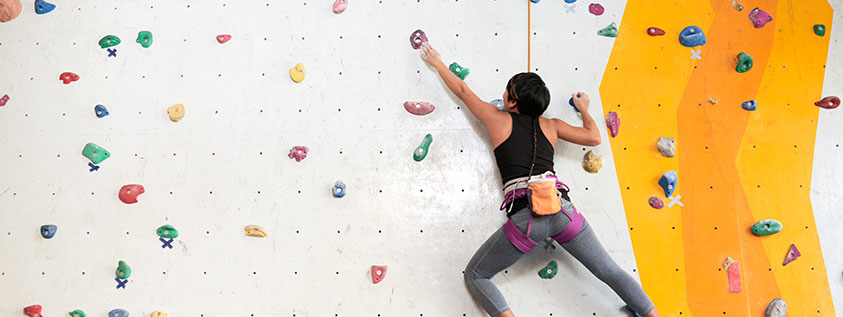The Arousal Theory of Motivation suggests that we are motivated to perform certain behaviors to regulate our physiological and psychological arousal levels. According to this theory, if we feel that we need a higher or lower level of arousal, we will engage in activities that help us achieve it. In this article, we will discuss exactly what the arousal theory is, and how you can use it for motivation.
In this Article:
What exactly is the optimal level of motivation?
The arousal theory seeks to explain what motivates us based on our innate needs as human beings. According to the Arousal Theory of Motivation, people are motivated to carry out activities to maintain an optimal physiological arousal level.
Individuals need different amounts of arousal
Different individuals may require different degrees of arousal to be motivated to undertake exciting activities. Other people might do better with much lower arousal levels, so they may feel compelled to seek out soothing and relaxing activities as a result. In other words, the arousal that motivates human behavior is different for everybody.
A person with a high arousal need is more enthusiastic and ready to take on new challenges. In contrast, those whose arousal level is at a low point will usually feel less active, have fewer ideas, and be more withdrawn from the outside world.
The optimal level of arousal
The idea that we are driven to pursue activities that will help us preserve an ideal balance is one of the key assumptions behind the arousal theory.
When our levels drop below our optimal personal levels, we seek stimulation to raise them. When our arousal is above the optimal level, an individual will seek relaxation to cool down.
Motivation for individuals can depend on different circumstances—for example, what type of activities the person undertakes or the person’s mood at the time. The Arousal theory states that some people need to be emotionally aroused in some way before they are motivated to act on things.

What influences the need for arousal
Several variables may influence each person’s optimum arousal levels, some examples are:
- Thoughts
- Environment
- Genetics
- Experience
- Mood
- Stress level
- Hormones
- Emotional state
- Mental state
- Age
For instance, when people are in a good mood, they may be more inclined or inspired to act on something than when they are sad or depressed. It is therefore essential to consider how the moment can make us differ in our motivation levels.
As you can see, arousal theory states that motivation comes from within, and individuals are driven to carry out activities based on their personal needs. If they are in an ideal state of mind, they will be most inclined to seek out challenges and new opportunities.
In general, genetics has a significant impact on arousal. For example, there are people with ADHD, and this is because they probably have an adenosine receptor mutation, leading to lower amounts of neurotransmitters in the brain.
People that seek high-arousal activities
People that have high arousal need love, action, and adventure. They are always looking to go out and do things with a lot of energy. Those people tend to be very active people who can’t stand doing relaxed tasks for a long time.
They also have a high level of curiosity and are always looking forward to something new or exciting. People that have high arousal love having fun and doing the things they enjoy the most, so they will do anything if it helps them get their adrenaline going.
Examples of activities for people with high arousal needs
Whether a person always looks for arousal or is just in the mood for arousal, thrilling and exciting activities tend to be rewarding to them. These activities are, for example:
- Extreme sports like sky diving, skating, and bungee jumping
- Being active and outgoing, and doing things like running and dancing
- Watching scary movies or going to haunted houses during Halloween
- Participating in games that are high stakes, such as poker or blackjack
- Fast-paced online games, such as first-person shooters
- Playing video games with a lot of action and adventure
- Visiting amusement parks, water parks, and other such places that provide a lot of excitement
- Seeking sexual arousal
- Performing risk-taking behaviors like driving fast
- Fighting sports like boxing, kickboxing, judo, and MMA
These activities will provide people with a lot of stimulation and will make them feel young and vibrant. The more exciting the activity is, the greater the arousal for some individuals. According to arousal theory, if persons are in an excellent mental condition, they will be more motivated.
People that seek low-level arousal activities
People that seek low-level arousal activities have a high need for relaxation. They love to stay at home and relax, so they are more inclined to read a book or watch television in their spare time. Usually, they avoid any activities that are too intense.
They also need a lot of peace and quiet, so that they can fully relax. They may not enjoy being with large groups of people for very long, so their ideal evening might consist of staying at home and watching TV on the couch by themselves.
Examples of activities for people with low arousal needs
Whether a person is always for relaxation or is just in the mood for low-level arousal, calming and relaxing activities tend to be rewarding for them. These activities are:
- Watching movies that have a relaxed pacing, such as romantic comedies or family films
- Taking part in board games that don’t have high stakes, such as Monopoly or Trivial Pursuit
- Studying or reading a book at home or in a library
- Reading the morning paper or watching the news
- Taking a walk or going for a swim in the park
- Visiting aquariums, zoos, and other such places that provide relaxation
- Doing yoga and meditating
- Take a bath, massage, or nap
These activities can be fun for people that seek low-level arousal as they provide them with a lot of relaxation. They allow individuals to reach their optimal level of arousal which is currently set as low. As a result of these benefits, seeking relaxation may be gratifying since it allows people to return to their natural level of arousal. These activities make them feel calm, and at ease, so it’s easy to see why they’re appealing.
Arousal influences happiness, performance, and decisions
Our levels of emotional arousal may impact our performance, happiness, and decisions. Let’s see how.
Decisions
Be aware of your level of emotional arousal when making decisions. If you’re in a high arousal state, you might not feel like doing a relaxing activity. But in a low arousal state, the fun and exciting activities may not sound appealing. The best solution is to experience different things at different levels of arousal. So don’t make rash decisions about different activities if you are in a very low or high arousal state. Sometimes it is good to sleep a night over it.
Performance
Arousal also influences performance and productivity. Low arousal can lead to a lack of enthusiasm, while too much arousal might make it difficult for you to focus on the important aspects of your work or other activities.
Happiness
Having the right arousal level also plays an important role in your happiness. If you need low emotional arousal and are forced into high-arousal situations, you will feel distressed and nervous. For example, if you are forced to attend a wild party, you might not feel much pleasure or enjoyment. Consequently, your level of happiness will be lower. However, parties can lead to great happiness if you love high-arousal activities. On the other side, if you have a very high need for arousal and you experience low-arousal activities, it might cause you to do self-destructive things, such as taking risks or doing drugs.
A word from Sublime People
Psychology teaches us a lot about arousal, the need for arousal, the effects of arousal on happiness and decision-making, and how we can use that to our advantage. You can also use it to your benefit by knowing which activities are best to do when you feel low or high arousal.
We would love to know your opinion about the arousal theory of motivation. Leave us a comment below!






